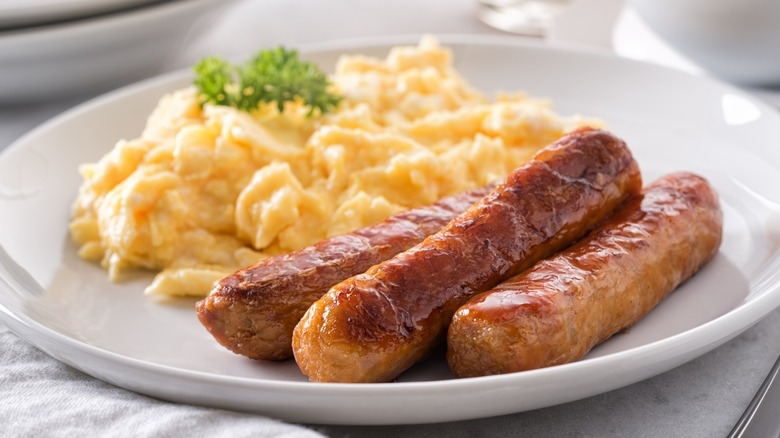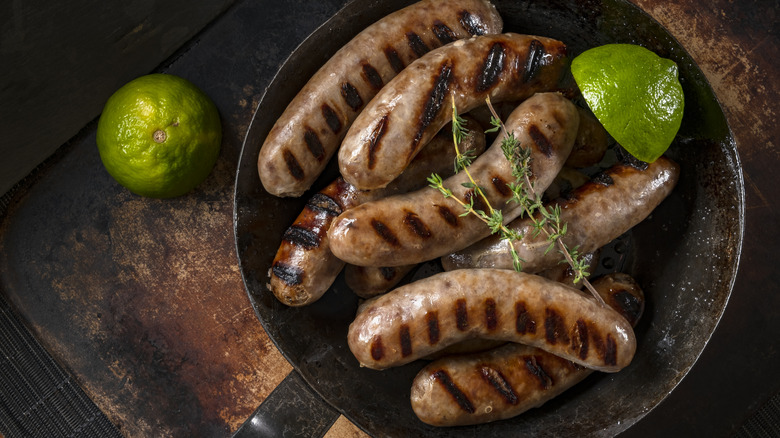The Savory Difference Between Breakfast And Italian Sausages
When Pvt. Benjamin Buford Blue rattled off a seemingly unending list of all the ways he likes to enjoy shrimp, he didn't just win over Forrest Gump — he also found a friend in each of us. Holding that kind of reverence for a food, in all of its forms, is something universally understood. And while shrimp may not be your go-to, many can agree that whatever way sausage is being served, we want a heaping helping.
Sausage has been incorporated into countless cuisines across the globe — from Germany and Spain to North Africa and China. In the United States alone, you can find more than 200 varieties of the meaty treat (per All Recipes). However, you don't have to be well-versed in the world of sausage to know that Italian sausage tastes great in pasta and that breakfast sausage prefers to be paired with maple syrup and eggs. So, what gives?
What's the difference?
While all sausage is made by combining ground meat with a variety of spices — sometimes encased in prepared animal intestines — there are countless variations of this multicultural delight. Any meat (as well as some meat substitutes) can be fashioned into a sausage. However, breakfast sausage is most commonly made with pork. Two of the most common types of sausage eaten in the U.S. — Breakfast sausage and Italian sausage — are pork based.
Breakfast sausages feature herbs like sage and thyme, which lend to a more herbaceous flavor profile. These can be eaten alongside scrambled eggs, or on a breakfast biscuit. In Italian sausage, however, fennel and garlic are the stars of the show. Most grocery stores offer both sweet and spicy Italian sausages — the only difference being that the spicy variation contains a touch of chili pepper. While many Breakfast sausages are pre-cooked — like some products made by Jimmy Dean and Oscar Meyer — Italian sausage is typically bought raw, either ground or in casings.
Links or patties?
While sausage links can be made without casing they are often formed by packing raw meat into a tubular casing. Premio notes that its "ready-made" shape makes for easy preparation, however, the sausage can also be removed from its casing for more versatility. Patties, on the other hand, never have casing and are made by pressing the meat into flat, round disks. As the ground meat used for sausage links often has to be manipulated into casing, it is typically smoother than the sausage used to make patties, which tends to have a more rustic texture.
Both Italian and Breakfast sausages can be found in the form of links or patties. And while you might be happy with either (or both), for serious sausage lovers, the question of links or patties is a matter of great debate — especially in the South. Nevertheless, a poll commissioned by the National Hot Dog & Sausage Council seemed to settle the matter, discovering that 54% of sausage-eating Americans prefer links while 25% are loyal to the patty. The remaining 21% had no preference — an answer that seems to say, "Sausage is sausage, and that's enough for me!"


